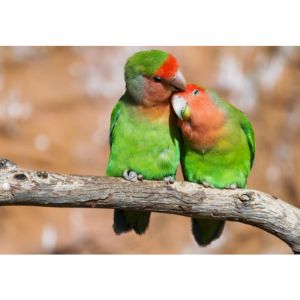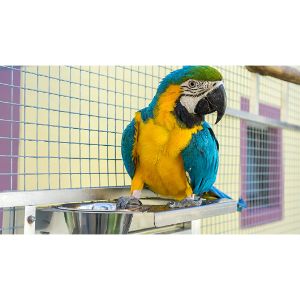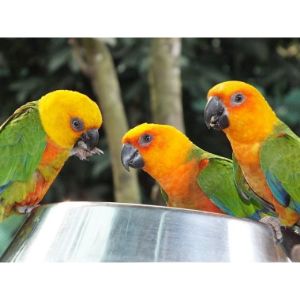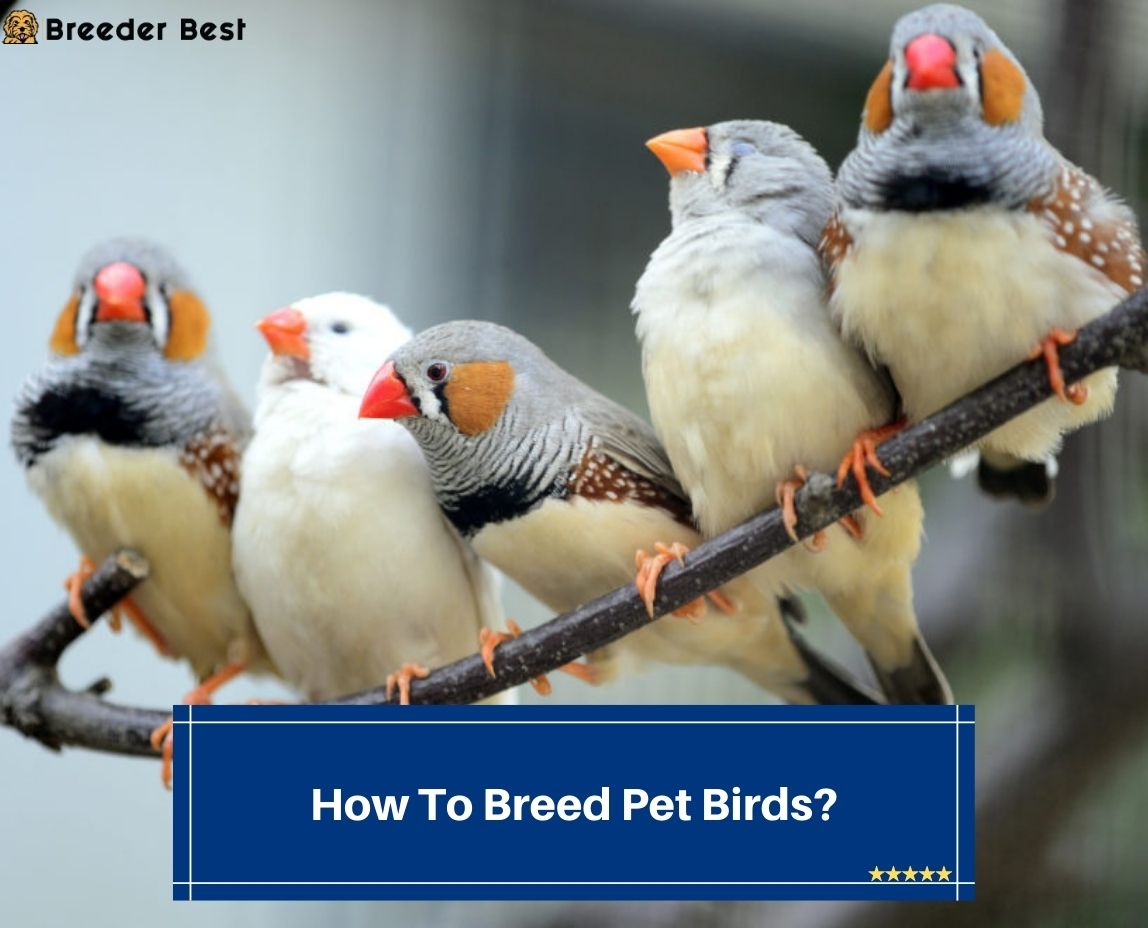The breeding of pet birds is a fun and rewarding experience, but it’s essential to do your research before getting started. The guide below will instruct you on what you should know about breeding pet birds, from choosing the suitable species to buying a proper nesting box.
Breed Pet Birds

With patience and attention, you can successfully become a pet bird breeder and enjoy watching your birds raise their young. Follow these tips, and you’ll be on your way to becoming an expert bird breeder.
Other articles you would like: Animal Breeding For Disease Resistance and Animals That Breeder A Lot.
Pick a Bird Species To Breed

You should breed different kinds of birds for various reasons. For example, you might breed parakeets to sell as pets or canaries to sell as show birds. It’s essential to understand the needs of particular birds before you begin breeding them.
There are many factors to consider when choosing a bird species, such as size, temperament, and care requirements. Once you’ve selected a few potential candidates, research their specific breeding needs.
Here are some popular birds to breed:
- Parakeets. Active and chatty, these popular birds are easy to care for and don’t take up much space. There is always a market for friendly budgies. Parakeets love attention from humans, and some will mimic words. Parakeets are easy to breed because any pair will bond if they’re the only birds around, so you don’t have to carefully select your breeding stock.
- Lovebirds. These small parrots are simple to breed and display beautiful colors. They are becoming popular at bird shows. One thing to consider is that they constantly make noise. It’s not bad with one or two, but a colony of lovebirds can be noisy.
- Cockatiels. Another small parrot with a winning personality, the cockatiel, is enjoyable to see and hear. Breeding pet cockatiels are easy because they reproduce quickly and often and are doting parents to their chicks. Feeding these birds cooked beans and greens before breeding begins is a good idea to help them stay healthy.
- Zebra Finches. The zebra finch is an Australian species known for being happy and playful. The birds breed like nobody’s business. It’s good that they enjoy living in groups because it won’t take long for a colony to develop. Forced breaks are necessary after breeding to prevent these birds from constantly producing offspring. You may want to do some research into how to stop pet birds from breeding.
- Parrotlets. More long-lived than most other small birds, this South African species has a great personality but is highly territorial. Pairs of parrotlets must not be able to see or hear each other. They will attack other birds in their cage. Some of these birds are neglectful parents, so you must keep an eye on the chicks.
- Quail. Quails are popular for their delicious meat and eggs. Quail are easily stressed, so keep kids and pets away if you want these birds to breed. Even loud TV and radio noise can keep these animals celibate. One male can live in a cage with multiple females.
- African Grey Parrots. Grey parrots are intelligent companion birds that are extremely popular and endlessly fascinating. They live up to ninety years and can continue breeding until they die. The intelligence of these birds is displayed through their talking and mimicking skills. African greys will not breed if they don’t like their cage setup.
- Cockatoos. The birds are not the easiest to breed, but they are beautiful to look at and fun to have around. Cockatoos mate for life, so don’t make the mistake of forcing two random birds to be together because the pairing can result in fierce fights. The best method to introduce two cockatoos is to place them next to each other in separate cages.
- Canaries. The canaries need a lot of natural light to be happy and ready to breed. Like cockatoos, canaries need to remain apart. A male and female can only be held in the same cage while breeding. They should be separated by a wire barrier and only allowed in the same area when they are actively trying to breed. The male may attack the female if she is not immediately responsive to his advances.
Find a Breeding Pair

When you’ve decided what kind of bird you’d like to breed, the next step is to find a suitable mate for your bird. You can perform this pairing by purchasing another bird from a breeder or pet store.
It’s crucial to pick the correct pair of birds to breed. Both birds should be at least 18 months old. You need to ensure that both animals are healthy before breeding them. Make sure the birds like each other and that they are not related.
If you want to know more about breeding pet birds, know that breeding birds cannot also be pets. They lose any tame qualities while breeding, and some birds lose these qualities permanently. If you own a bird that is a beloved companion, do not turn it into a breeder, as the hormones involved with breeding will cause quite a personality change.
Check The Birds’ Health
Once you have two birds, it’s important to check their health to ensure they’re suitable for breeding. The check includes looking for diseases or parasites and ensuring the birds are of similar size and weight.
Take the birds to the vet for a check-up. The vet will be able to tell you if the birds are healthy and if they are ready to breed. They should be at a healthy weight and should be active and alert.
You should consider genetic testing if you are serious about breeding your birds. Testing can help ensure that the chicks are healthy and free of any genetic defects that they could pass to offspring.
You should also ensure that the bird’s cage is clean and spacious. The birds will need plenty of room to move around and exercise. A crowded or dirty cage can lead to health problems.
Procure The Necessary Equipment

Once you have a healthy breeding pair, you must provide them with some essential equipment. Equipment includes a cage, a nesting box, food and water dishes, perches, and toys. Your requirements will depend on whether you are running a pet bird breeding business.
You need to ensure the cage is large enough for the birds to move around freely and has plenty of ventilation. There should be no sharp pieces or anything that could hurt the birds.
The cage should also be covered so that the birds cannot escape. You need a large cage for successful breeding; the enclosure should be several feet tall and wide. A larger cage helps the birds become acquainted.
Depending on the type of bird, you may need an incubator. Many species are good at incubating their eggs, but some irresponsible parents like parrotlets might need some help. You should be willing to spend money to be a successful breeder. In addition to equipment, you will need food and supplements to ensure your birds remain healthy during breeding.
Healthy food is important right before breeding begins, especially for females. Calcium supplements are a good idea due to the depletion of the mineral that occurs with egg production. Creating eggs requires good nutrition.
Prepare For Breeding
Once you have the equipment, you must set up the nesting boxes in a quiet area of the cage. You should fill the nesting boxes with soft material such as shredded paper or cloth to help the birds use this material to build their nests. The box needs to have enough room for the female and all her chicks.
Birds will not breed if they don’t have enough light, so ensure the cage is in a well-lit area. A minimum of ten hours of natural light is ideal. You should also keep the temperature at a comfortable level for the birds. You need to make the birds believe it is pet bird breeding season.
The male will prepare the nesting box and do a mating dance when ready to begin mating. The female will need about two weeks to produce eggs. After the hen lays her eggs, there is a several-week incubation period.
The length of the incubation depends on the species of bird. Do not disturb the birds during the incubation process. Once the chicks hatch, you should care for them. Caring for the baby birds will include feeding them and keeping them clean. The parents will usually take care of the chicks, but you may need to help out if they aren’t doing a good job.
The chicks will need to be fed a special diet and kept warm. A brooder is an enclosed area with a heat lamp that keeps the chicks warm. After a few weeks, you can move the chicks to a larger cage. You will need to care for the birds until they are old enough to sell or give away. Care can take several months, so you must be prepared for a long-term commitment.
As the chicks grow, you will need to introduce them to the other birds in the cage slowly, so place them in a separate area of the cage. You will need to watch them closely to ensure they are getting along. It is also good to occasionally handle the chicks to get them used to human contact. After a weaning period that varies based on species, removing the chicks from their parents’ cage is safe.
Once the chicks are fully grown, you can then start breeding them. Place the chicks in a separate cage and repeat the process.
Conclusion For How To Breed Pet Birds

The breeding of pet birds takes a lot of time and effort. It’s essential to be prepared for this before you start. Also, ensure that it is legal to breed birds in your area. Some laws regulate the breeding of some species of birds. You could incur a fine if you violate these laws.
Look into zoning restrictions. Some areas do not allow outside aviaries. Also, some birds are boisterous. How will your neighbors feel about many birds chattering and squawking?
The final step is to monitor your birds closely. This process includes observing their behavior and eyeing any potential health problems. With some effort and care, you can successfully breed pet birds and enjoy watching them raise their young.
Breeding pet birds can be a rewarding experience, but it’s important to do your research and prepare before getting started. Make sure you understand the needs of the bird you want to breed and be sure to provide them with what they require to be successful. You can enjoy many years of happy and healthy breeding with some planning and preparation.
You will also like:

